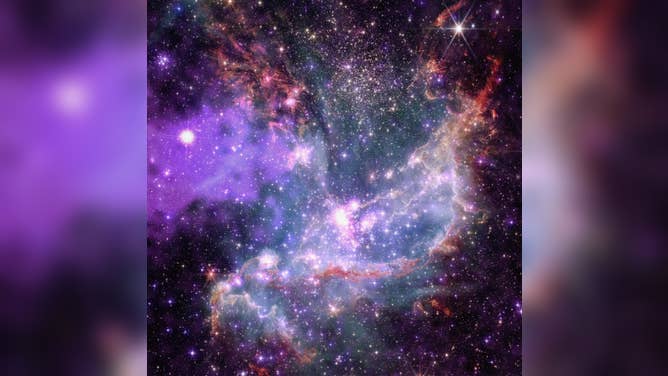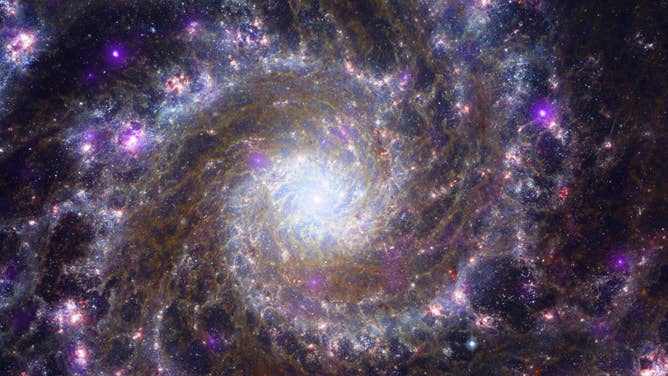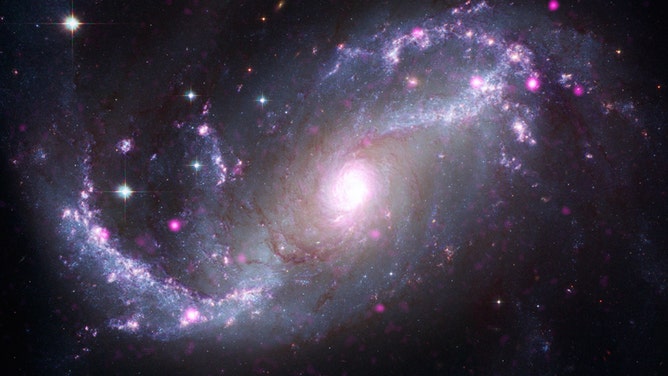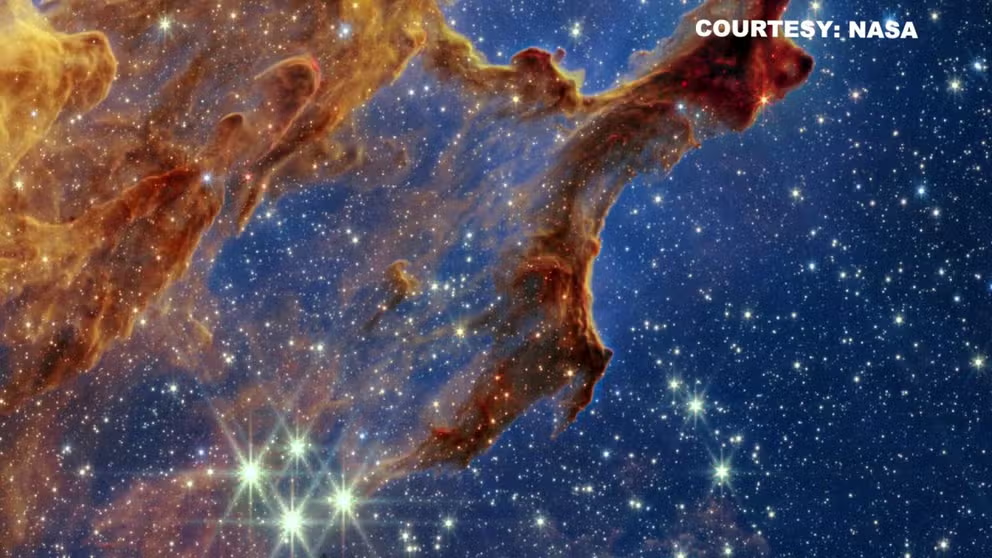NASA combines data from James Webb Telescope, observatory to present dazzling views of outer space
NGC 346 is a star cluster in a nearby galaxy. NGC 1672 is a spiral galaxy. Messier 16, also known as the Eagle Nebula, contains new stars and Messier 74 is a spiral galaxy much like our Milky Way.
Video tour of Webb's Pillars of Creation
The James Webb Space Telescope provides a near-infrared light view of the Pillars of Creation.
NASA’s Chandra X-ray Observatory and James Webb Space Telescope have joined forces to produce stunning composite images of the cosmos.
The space agency recently released images that combine X-ray data with infrared radiation to reveal objects that are invisible to humans.
The four composite images showcase galaxies, a nebula, and a cluster of stars many light-years away.
One of the composite images is of a star cluster known as NGC 346, located in the Small Magellanic Cloud.
The cluster is about 200,000 light-years away from Earth, and researchers believe the imagery reveals plumes and arcs of gas and dust, which serve as material for the formation of stars and planets.

NGC 346 is a star cluster in a nearby galaxy
(NASA)
JUPITER’S FORECAST: SWIRLING STORMS AS BIG AS EARTH THAT LAST FOR YEARS
Messier 16, or what is also known as the Eagle Nebula, makes up another composite image.
The imagery showcases X-rays in red and blue, while infrared data is displayed in red, green and blue.
Together the displays depict what researchers say are dark columns of gas and dust from stars in their early formation stages.
Astronomers often refer to this region as the "Pillars of Creation," as it is populated with many young stars.

Messier 16, also known as the Eagle Nebula
(NASA)
The observatory and James Webb Space Telescope also created a detailed look of a galaxy similar to our own Milky Way.
Messier 74 is approximately 32 million light-years away but is typically too dark to observe with a regular telescope.
With the infrared imagery enhancement, gas and dust become apparent, and the X-ray wavelengths help depict the high-energy activity.

Messier 74 is a spiral galaxy
(NASA)
The last of the stunning composite images is of NGC 1672 or what is otherwise known as a spiral galaxy.
The observatory’s data revealed compact objects such as neutron stars or black holes, along with remnants of exploded stars.
Telescope data exposed dust and gas within the galaxy's arms.

NGC 1672 is a spiral galaxy
(NASA)
SEE THE OBJECTS HUMANS LEFT BEHIND ON THE MOON
The James Webb Space Telescope was launched in late 2021 and only became operational last year.
The telescope has observed distant universes and helped find the faintest celestial objects.
NASA believes operations of the telescope have exceeded expectations, and the space observatory could easily exceed its expected 10-year lifespan.
What is the James Webb Space Telescope?
According to NASA, the JWST sees the universe using infrared radiation, a form of light that we feel as heat and is invisible to human eyes.

